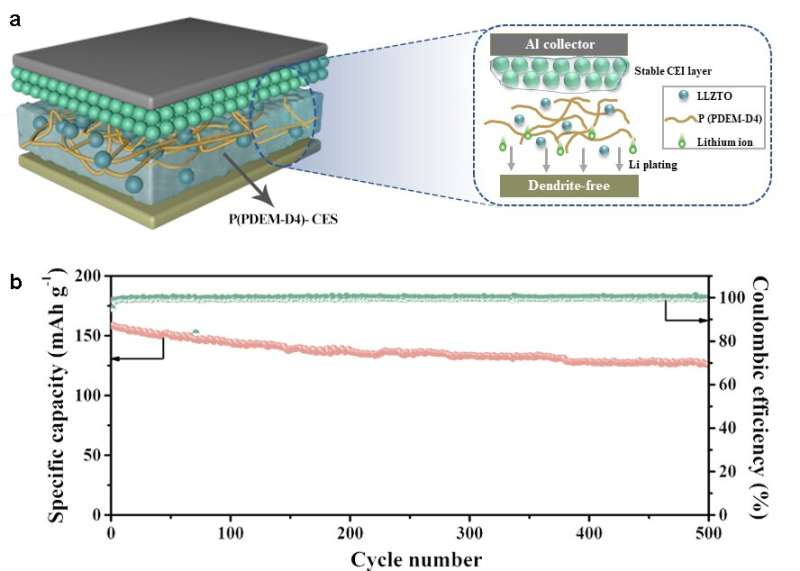
Solid-state electrolyte (SSE) is promising in next-generation lithium (Li) metal batterie (LMB) applications because of its significantly enhanced safety and more compatible interface characteristics than flammable, volatile traditional liquid electrolyte. Combining the strengths of inorganic solid-state electrolytes and solid-state polymer electrolytes, composite solid electrolytes (CSEs) are practically more viable for commercial applications. However, only a few efforts have achieved high-voltage (>4.3 V vs. Li/Li+) LMBs with distinguished comprehensive performance, which is mainly attributed to the fact that CSEs with both high ionic conductivity and good compatibility with electrodes are difficult to obtain. Furthermore, the relatively tedious fabrication process, such as the ex-situ solution casting technique accompanied by the use of noxious organic solvents, can hardly meet the practical needs of large-scale commercial production.
Recently, Prof. Guanglei Cui developed novel CSE (denoted as P(PDEM-D4)-CSE) comprising a star-shaped siloxane-based electrolyte coupled with LLZTO ceramic filler. P(PDEM-D4)-CSE was prepared through facile in-situ polymerization of the electrolyte precursor solution containing 2,4,6,8-tetramethyl-2,4,6,8-tetravinylcyclotetrasiloxane (D4), poly(ethylene glycol) methyl ether acrylate (PDEM), lithium difluoro(oxalate)borate (LiDFOB), and LLZTO particles.
Among them, D4, as a part of the polymer backbone, can effectively increase the free volume for the segmental motions of polymer chains, thereby enhancing ionic conductivity. PDEM, as a Li+ carrier, provides channels for Li-ion transport. LiDFOB, as the Li source, supplies Li+ and DFOB− and participates in the construction of the interface film. LLZTO, as an active ceramic filler, not only enhances the segmental motion of the polymer matrix by reducing crystallinity and increasing the free volume of the polymer matrix, which helps construct more channels for ion transport, but also acts as the anionic receptor that promotes the dissociation of Li salts and the increase of free Li-ion concentration.
P(PDEM-D4)-CSE exhibits high ionic conductivities (i.e., 4.0 × 10−5, 1.68 × 10−4, and 5.73 × 10−4 S·cm−1 at 30°C, 60°C, and 100°C, respectively). Furthermore, this CSE can induce more uniform, reversible Li plating/stripping behaviors, mainly owing to the formation of compatible solid electrolyte interface. As a result, the as-developed CSE enables long-life 4.4 V-class solid-state LMBs based on a LiCoO2 cathode, which deliver 79.7% capacity retention and 99.74% average Coulombic efficiency after 500 cycles at a 0.5 C rate. The results are published in Science China Chemistry.
Ionic liquids make a splash in next-gen solid-state lithium metal batteries
Qinglei Wang et al, An in-situ generated composite solid-state electrolyte towards high-voltage lithium metal batteries, Science China Chemistry (2022). DOI: 10.1007/s11426-022-1221-4
Citation:
An in-situ generated composite solid-state electrolyte for high-voltage lithium metal batteries (2022, April 22)
retrieved 22 April 2022
from https://techxplore.com/news/2022-04-in-situ-composite-solid-state-electrolyte-high-voltage.html
This document is subject to copyright. Apart from any fair dealing for the purpose of private study or research, no
part may be reproduced without the written permission. The content is provided for information purposes only.
Stay connected with us on social media platform for instant update click here to join our Twitter, & Facebook
We are now on Telegram. Click here to join our channel (@TechiUpdate) and stay updated with the latest Technology headlines.
For all the latest Technology News Click Here
For the latest news and updates, follow us on Google News.
